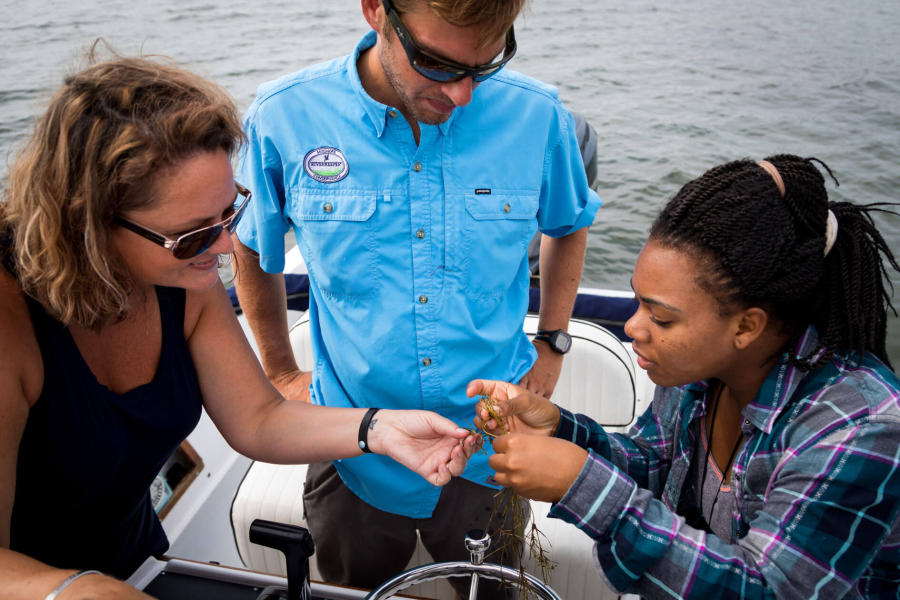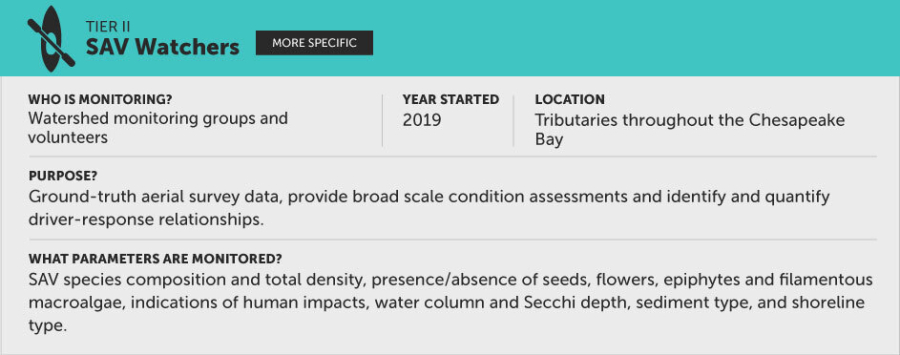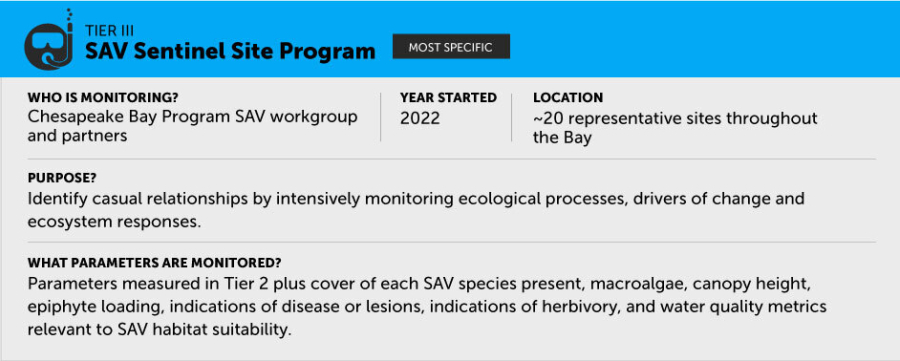SAV Monitoring Program
The Chesapeake Bay Program takes an integrated, three-tiered approach to monitoring Submerged Aquatic Vegetation

The Chesapeake Bay Program’s SAV monitoring effort employs a three-tiered approach to monitoring submerged aquatic vegetation (SAV) in the Bay. The integrated system includes aerial surveys, volunteer monitoring and sentinel sites.



